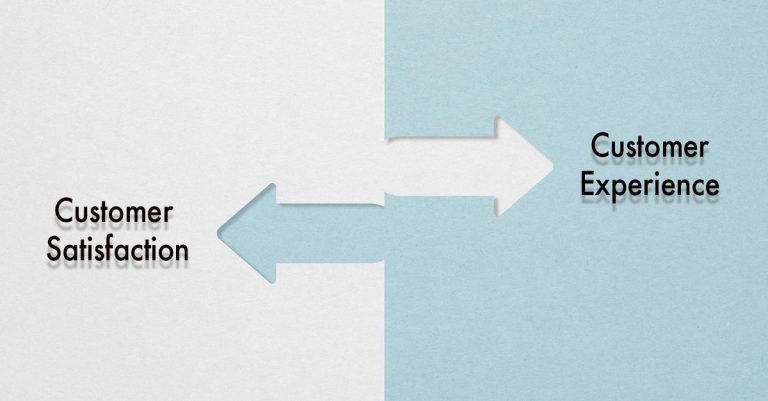Customer Experience or Customer Satisfaction? What’s the difference?

When it comes to business, the terms “Customer Experience” and “Customer Satisfaction” are often used interchangeably, but they actually represent distinct aspects of the customer journey. While customer satisfaction is a crucial metric for gauging customer happiness, Customer Experience encompasses a broader spectrum of interactions between customers and businesses. Understanding the difference between the two concepts is critical for creating a successful business strategy that prioritizes customer needs and desires.
What is Customer Experience?
The Customer experience (CX) refers to the cumulative effect of all interactions a customer has with a business throughout their journey, spanning from discovery to purchase and beyond. It encompasses everything from initial marketing materials and website design to the quality of customer service and post-purchase follow-up. CX focuses on creating a seamless, enjoyable, and engaging experience that goes beyond meeting basic needs or providing a product.
A remarkable CX strategy involves understanding customer expectations and designing processes and systems to fulfill them at every touchpoint. This necessitates a deep comprehension of the customer journey and a willingness to invest in tools, technologies, and training required to deliver an exceptional experience.
What is Customer Satisfaction?
Customer satisfaction (CSAT) is a measure of how content or pleased a customer is with a specific product, service, or experience. It is typically evaluated through surveys or feedback forms that ask customers to rate their experience on a satisfaction scale. CSAT is important because it offers insights into how well a business meets customer expectations and highlights areas that need improvement.
The differences between CX and CSAT
CX and CSAT differ in terms of scope, focus, and measurement approach. While CX encompasses the entire customer journey and centers on emotions and perceptions, CSAT focuses on a specific interaction and measures satisfaction with a particular outcome. CX considers all touchpoints and channels, whereas CSAT concentrates on a single touchpoint. Furthermore, CX pertains to the customer’s entire journey, evaluating long-term loyalty, while CSAT relates to a specific experience, assessing short-term satisfaction.
Let’s have a look at the key differences between Customer Experience (CX) and Customer Satisfaction (CSAT) in the table below:
CX | CSAT | Focuses on the overall customer journey | Focuses on a specific interaction
|
|---|---|
Measures emotions and perceptions | Measures satisfaction with an outcome |
Considers all touchpoints and channels | Focuses on a single touchpoint |
Relates to the customer’s entire journey | Relates to a specific experience |
Looks at long-term Loyalty | Looks at short-term satisfaction |
The connection between CX and CSAT
Although Customer Experience and customer satisfaction are distinct concepts, they are closely interconnected. A strong CX strategy aims to create a positive experience that ultimately leads to higher levels of satisfaction. Conversely, a poor CX strategy can result in lower satisfaction levels, potentially leading to customer churn and lost revenue.
The key to a successful CX strategy lies in delivering a great experience at every touchpoint, from the initial interaction to the final one. This necessitates a deep understanding of customer needs and expectations, along with the ability to anticipate and address problems proactively. By prioritizing CX, businesses can foster customer Loyalty, increase return customers, and encourage positive recommendations.
By focusing on CX, businesses can differentiate themselves from competitors, build customer loyalty, and increase revenue. A great CX strategy can also help businesses identify areas for improvement, streamline processes, and reduce costs. Ultimately, by putting the customer at the center of everything they do, businesses can create a sustainable competitive advantage that leads to long-term success.
For example, let’s consider an online streaming service. They focus on providing a user-friendly platform with a wide selection of movies and TV shows, smooth playback, and personalized recommendations. By delivering an exceptional customer experience, they aim to ensure that customers have a seamless and enjoyable streaming experience, leading to high CSAT scores and increased customer Loyalty.
You can now check for FREE both your CX metrics and your CSAT score with Pobuca Experience Cloud!
Why Prioritize Customer Experience?
Prioritizing customer experience is crucial for businesses aiming to thrive in today’s competitive marketplace. With a myriad of choices available, customers are more inclined to switch brands or providers if they don’t receive the experience they expect. Studies have even shown that customers are willing to pay more for a better experience and are more likely to recommend businesses that provide one.
Wrapping up
By focusing on CX, businesses can differentiate themselves from competitors, build customer loyalty, and increase revenue. A robust CX strategy also helps businesses identify areas for improvement, streamline processes, and reduce costs. Ultimately, by placing the customer at the center of everything they do, businesses can establish a sustainable competitive advantage that leads to long-term success.